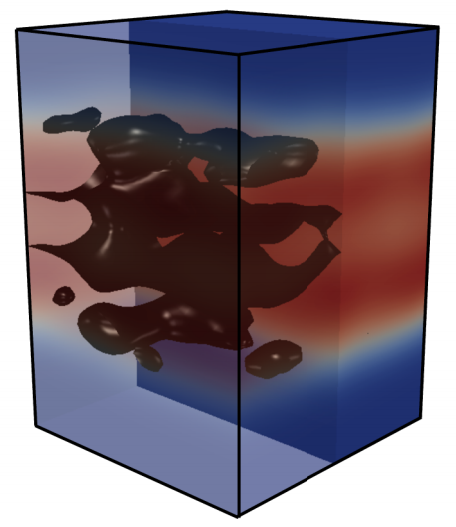Abstract
Block copolymers, due to their ability to self-assemble into periodic structures with long range order, are appealing candidates to control the ordering of functionalized nanoparticles where it is well accepted that the spatial distribution of nanoparticles in a polymer matrix dictates the resulting material properties. The large parameter space associated with block copolymer nanocomposites makes theory and simulation tools appealing to guide experiments and effectively isolate parameters of interest. We demonstrate a method for performing field-theoretic simulations in a constant volume-constant interfacial tension ensemble (\(nV \gamma T\)) that enables the determination of the equilibrium properties of block copolymer nanocomposites, including when the composites are placed under tensile or compressive loads. Our approach is compatible with the complex Langevin simulation framework, which allows us to go beyond the mean-field approximation. We validate our approach by comparing our \(nV \gamma T\) approach with free energy calculations to determine the ideal domain spacing and modulus of a symmetric block copolymer melt. We analyze the effect of numerical and thermodynamic parameters on the efficiency of the \(nV \gamma T\) ensemble and subsequently use our method to investigate the ideal domain spacing, modulus, and nanoparticle distribution of a lamellar forming block copolymer nanocomposite. We find that the nanoparticle distribution is directly linked to the resultant domain spacing and is dependent on polymer chain density, nanoparticle size, and nanoparticle chemistry. Furthermore, placing the system under tension or compression can qualitatively alter the nanoparticle distribution within the block copolymer.
